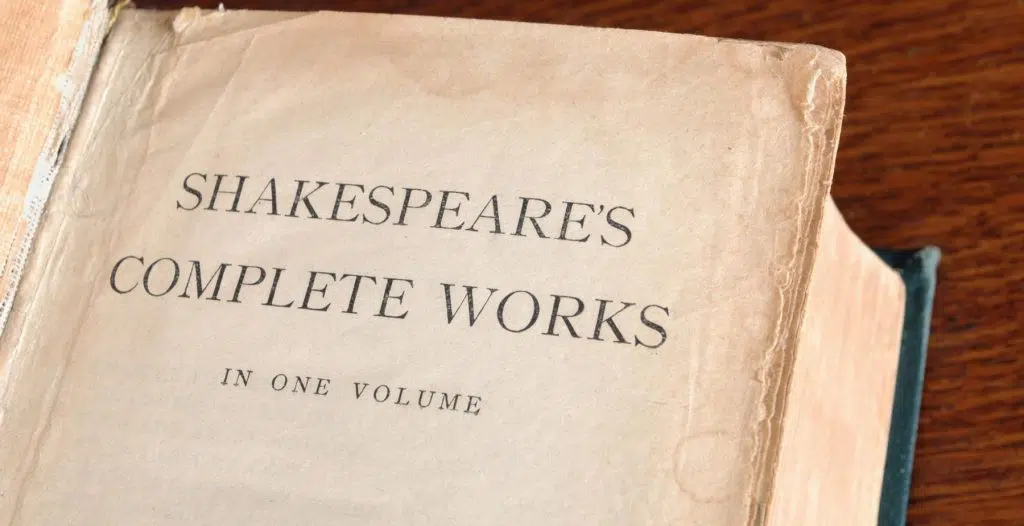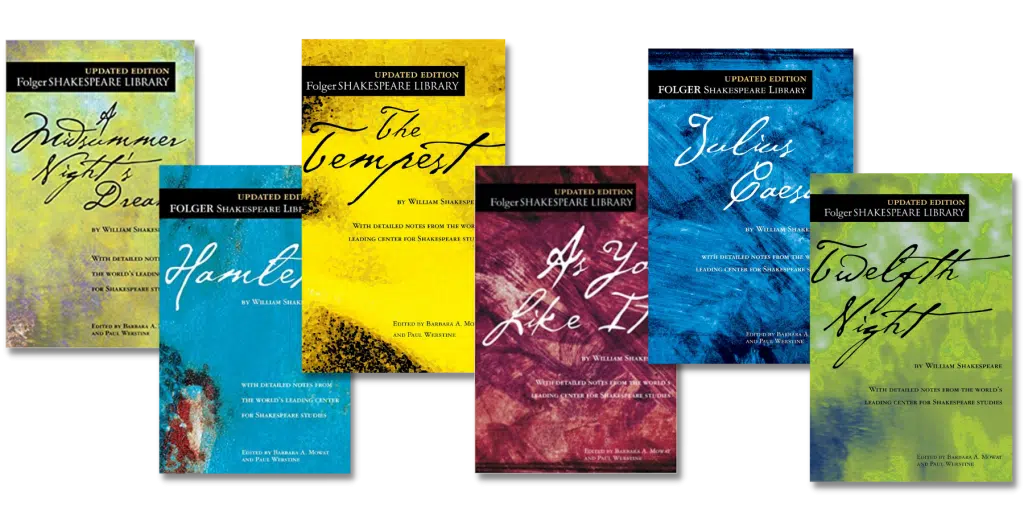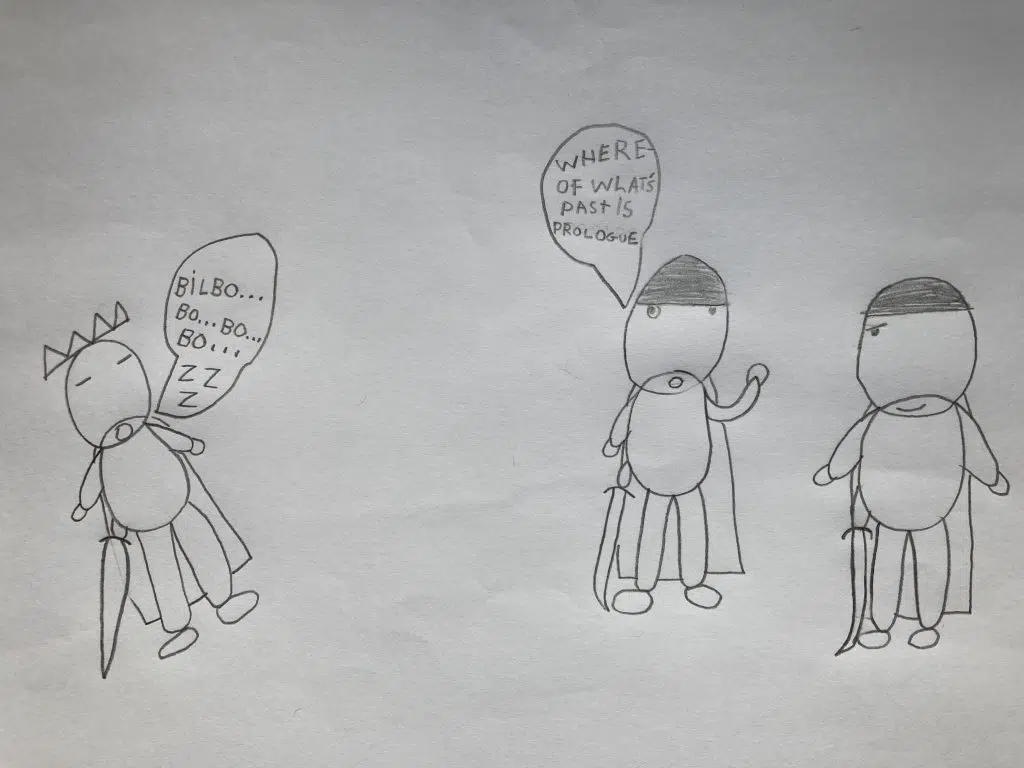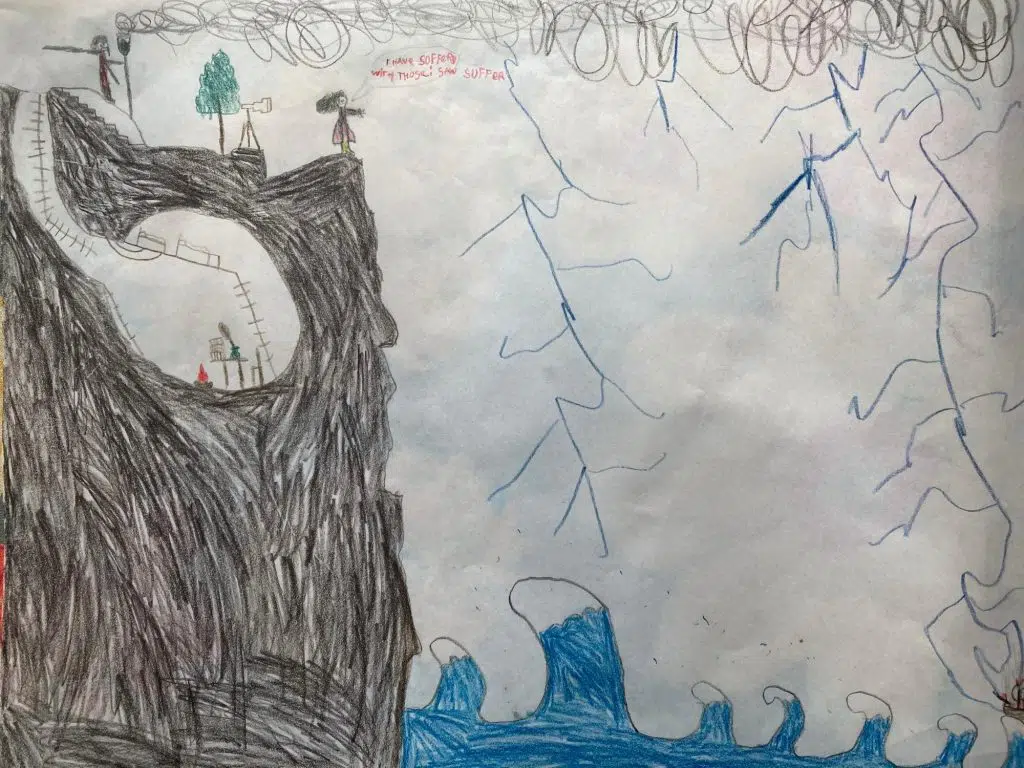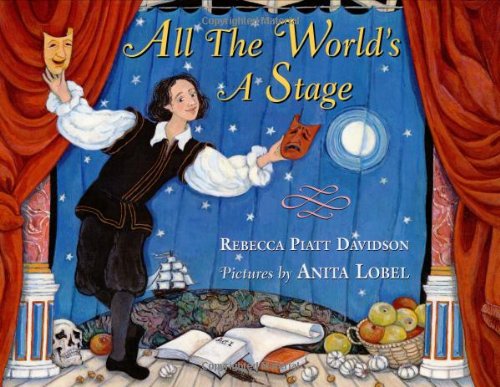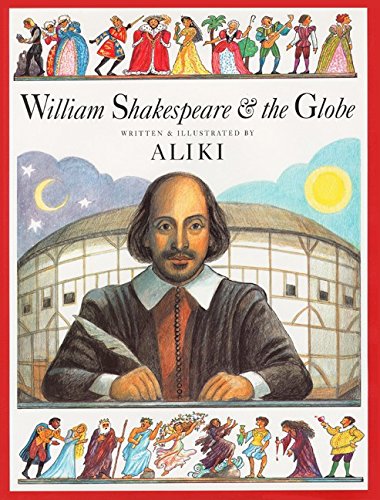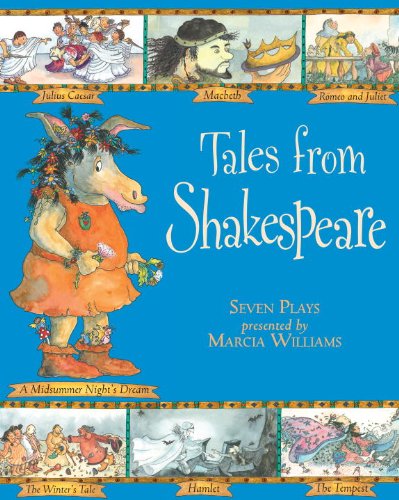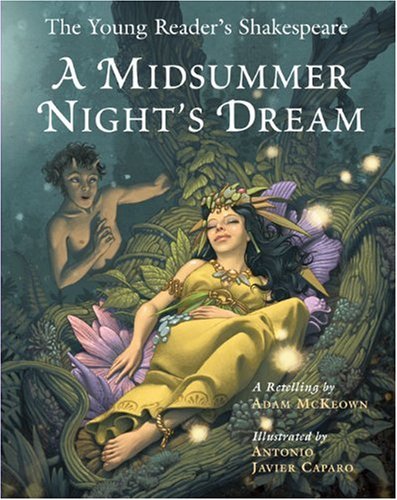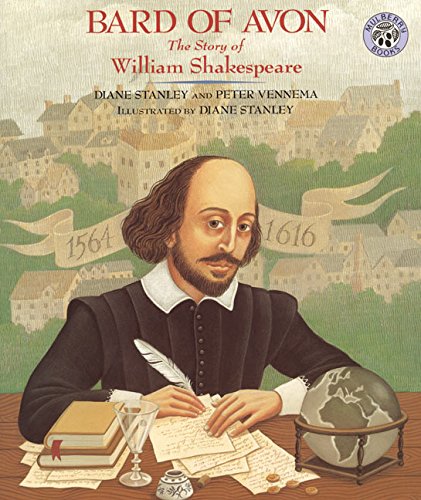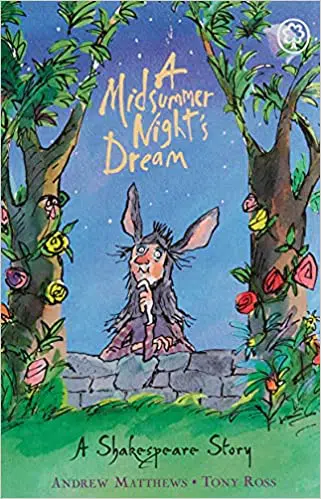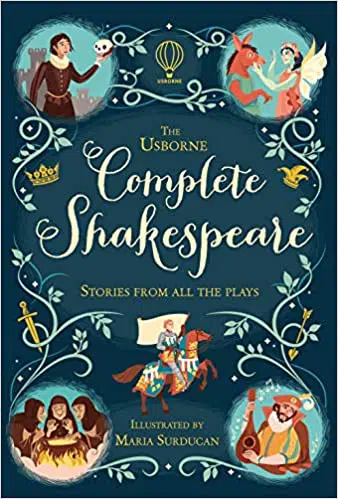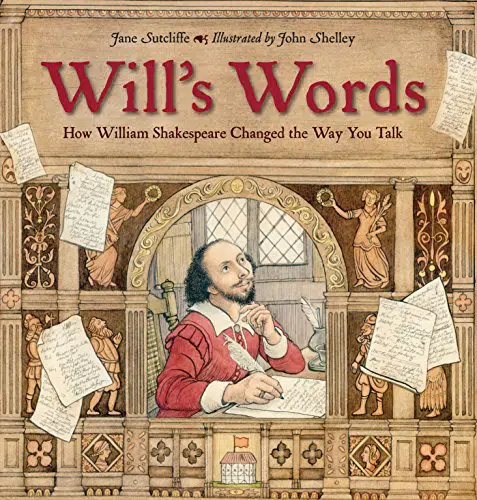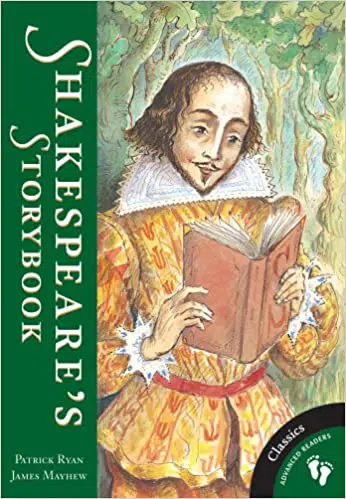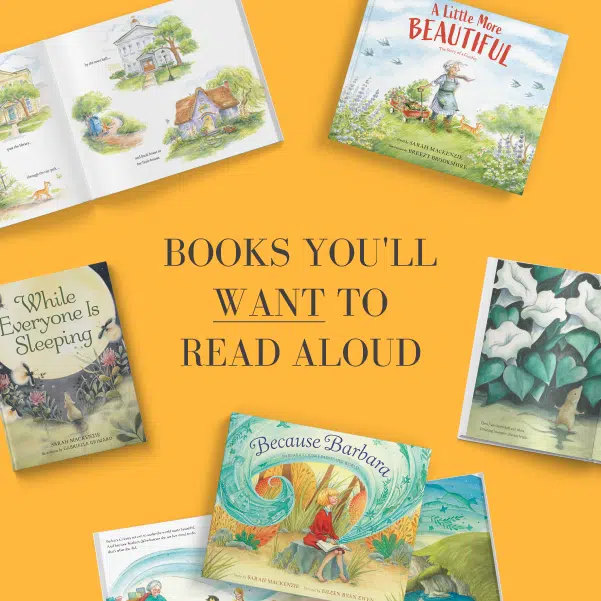Speaker 1 (00:00):
Hi, Sarah.
Holly (00:01):
Hi, Sarah. My name is Holly.
April (00:03):
Hi, Sarah. My name is April.
Speaker 4 (00:04):
I’m in Melbourne, Australia.
Speaker 5 (00:07):
I have a question about-
Julianne (00:08):
My name’s Julianne and we live in India.
Speaker 7 (00:11):
I am wondering-
Krystal (00:12):
Hi, Sarah. This is Krystal from Milwaukee, Wisconsin.
Speaker 9 (00:15):
Can you give me a suggestion for an especially fabulous book?
Sarah (00:23):
Hey, there. I’m Sarah Mackenzie. This is the Read-Aloud Revival. In this short episode, I’m answering one of your questions.
Maria (00:31):
Hi, Sarah. This is Maria. I am wondering if you could share your method for teaching Shakespeare in your homeschool. Thank you.
Sarah (00:41):
Thank you for this question, Maria. Around the same time that you sent this in, our Read-Aloud Revival community director, Kortney Garrison, and I had been talking about Shakespeare and how we were teaching in our home schools. So I invited her on so we could talk about this together. So Kort, you are teaching The Tempest in your homeschool co-op right now, is that right?
Kortney (01:03):
Yes. Yes. Even though we have a deep devotion to Shakespeare in our house, this is the first time that I’m teaching formally. I feel like it’s been a whole new approach for me and I’m learning things that I could only learn from being right in the middle of teaching.
Sarah (01:18):
What ages are the kids that are in your homeschool co-op doing The Tempest or reading The Tempest?
Kortney (01:22):
We have a mixed-age group from fourth grade to ninth grade.
Sarah (01:26):
Oh, wow! Like a big, wide span. That’s fantastic. Okay. Yeah. First, we want to say that there are a million ways to teach Shakespeare. We are not here to teach you “how to teach Shakespeare”, all caps, right? There’s not a right way to do it and a wrong way to do it. Well, there might be a wrong way to do it. We’ll talk about that in a second. But what we want to do today is help you, the listener, think about your goals here so you can figure out the best way to move forward.
Kortney (01:59):
Yeah. Starting with our goals was so important for me as I was planning. In our co-op, some of the kids have done Shakespeare before and some this is their first time. My goal was that this would not be their last time, that they would be less intimidated, maybe have a few tools for the next play, and that I wanted them to fall in love with Shakespeare. I wanted them to know that they could come back to it. As soon as I knew what my goal was, then I could tailor what we were doing to support those goals.
Sarah (02:30):
That’s so good because I think so often, not just with Shakespeare, but with any part of our curriculum, we fall into the trap of covering the subject. We think about it like, “We need to cover this topic or this subject.” So in the case of Shakespeare, I’ll find myself slipping into that idea of like, “We need to cover this play or we need to read this play to cover… ” which is kind of a silly thing to think. When I think through what do I want for my kids, I want them to want to watch and read Shakespeare later, not just this one time when they’re in eighth grade.
Kortney (03:03):
Right. For the rest of their life.
Sarah (03:05):
Exactly, exactly. Audrey, my oldest, is 20. She just wrapped up her sophomore year in college. She’s an English major, so she’s definitely reading Shakespeare at college. She loved Shakespeare when we were doing it in our home, or at least… I guess I haven’t asked her if she loved it. But I know she enjoyed it because she always seemed to enjoy it anyway during our lessons. But then she went to university, and she’s at a fabulous university, but she’s taken a Shakespeare class that she did not love.
(03:38):
When she finished her last paper, she said, “That is the last time I have to read Shakespeare.” And I was, “I know.” I thought, “Oh, no, no.” Now, given probably enjoying Shakespeare was not her university professor’s goal… I mean, maybe it should have been. I don’t know. I’m not just saying. But I think it’s worth considering our goal because what does it matter if they’ve read all of Shakespeare’s works or if they know the premise of all the plays or if they can quote some of Shakespeare’s sonnets if they never want to read or watch Shakespeare again.
Kortney (04:11):
That would just be tragic to me. That would be a fail for sure. But it sounds like… something that Charlotte Mason said, she said, “At the end of our education, it isn’t how much we know, but how much we care.”
Sarah (04:25):
And I think it’s such an easy thing to forget when we’re either in the thick of homeschooling or when we’re planning our homeschools because we’re thinking about the things we want to “cover”, which we probably should do a whole episode on that word because I have problems with that word when it comes to curriculum. Let’s talk about how. I’m going to back up and say that my kids right now are 20, 18, 16, 10, 8, and 8, and we usually start reading Shakespeare… Well, let’s see. We start reading Shakespeare’s stories when they’re very small by reading adaptations. We’ll talk about adaptations in a minute.
(05:07):
Then for the most part, I keep it very, very simple. I usually do one Shakespeare play a year. And not always. There have been plenty of years where we just haven’t gotten to Shakespeare. Every year that I had a new baby, I can guarantee we did not do any Shakespeare. Probably the years where my twins were two, three, and four, we did not do Shakespeare. Those were hard homeschooling years. But remember when we’re talking about our goal, what’s the goal of teaching Shakespeare, my own goal is not for my kids to get through all of Shakespeare or to be familiar with all of Shakespeare’s works.
(05:41):
My own goal is to give them a taste or an introduction. So just like you said, Kort, they want to get more. So they’re hungry for more, so they think, “Oh, I loved this one, so maybe I’ll like another one.” Then they can realize that there are riches there that they can revisit again and again and again. I typically pick one per year. I like the comedies better, so I tend to stick with the comedies. We usually read adaptations like picture books or graphic novel versions, which we have some recommendations for you we’ll talk about in a minute.
(06:11):
But I almost always start with adaptations because to me it feels like we can enjoy the nuance of the language and even understand what the heck is happening in the play when we already know the plot line. Is that something you do too, Kortney?
Kortney (06:24):
Yes. For us, we always start with adaptations. It feels like that’s an essential part of the scaffolding if you’re going to be successful in diving deep into the language.
Sarah (06:33):
Yeah. Yeah. There’s a lot of really good adaptations-
Kortney (06:37):
Yes. Yes, there are.
Sarah (06:39):
… in abridged versions. Yeah. I don’t do this with like a six-year-old, but I do with my older kids. We’ll listen to the play dramatized on audio, which is really great because then you have of course performers acting it out and they lend a lot of understanding to what’s going on. I mean, if you’re listening to this and you are thinking, “Yeah, but I don’t understand what’s happening in a Shakespeare play,” you and me both, sister. I never know what’s happening in a Shakespeare play. I need to see it, I need to know the plot line, I need some help and hints.
(07:11):
We’re going to talk about that too. Then because Ken Ludwig tells me too, and I love Ken Ludwig, we memorize some Shakespeare lines. Those have brought a lot of joy and just delight. Those are so fun. The epitome of delicious memory work is to memorize a passage of Shakespeare.
Kortney (07:30):
Except when it’s your 15-year-old calling the nine-year-old a pied ninny.
Sarah (07:40):
This is not from Shakespeare, but not that long ago, one of my eight-year-old twins grabbed his brother’s book and ran from the room. So the other one’s coming down behind him, before I could scold the first one, the second one says, “You thieving magpie.” I was just like, “Well done.” That was such a great insult. Then your children learn as long as they insult each other in Shakespeare, it’s all fine. That’s more or less all we do. We read adaptations, picture books, graphic novels.
(08:14):
We listen to the play on audio by professional actors if we can, maybe we see it if… I mean, that happens less frequently. I’m trying to think if I’ve ever taken all my kids to see Shakespeare. I can’t think of a time where we’ve all been able to go. For the most part, it’s listening on audio. Then we memorize them lines. That’s more or less all we do. We can get into some of the details on those. But Kortney, I’m super keen on hearing what has worked well with your own homeschool group this year, especially with a group situation and then with that wide age range too. I’m curious to know how what you do is similar or different than what I do.
Kortney (08:49):
It’s very similar actually. We definitely started with adaptations, lots of scaffolding for story and characters. We’ve got lots of picture books that are tangential, they’re not the play. It’s about Shakespeare’s life and things like that. Then we’re listening to one act every week. So we’re doing it over six weeks. We did a week of introduction and then one week for each of the five acts. We’re not memorizing lines this time, but other than that, yeah, very similar.
Sarah (09:23):
Okay. Let’s talk about that whole starting by reading adaptations, because I think this might be the key piece that opens the door to Shakespeare. Because like I mentioned before, if you don’t know what’s happening, it just makes you feel dumb to read Shakespeare, listen to Shakespeare, or watch Shakespeare if the whole time you’re thinking, “I have no idea what’s going on.” So I think adaptations can be the doorway into, hey, this is just a really good story first of all. So it helped us get familiar with the story before we try and read the original Shakespearean language. So let’s recommend some.
(10:09):
I love the books by Adam McKeown. I think that’s how you say his last name. I don’t really know. M-C-K-E-O-W-N. I’m sorry, Adam, if I am not pronouncing that right. Those are called the Young Reader’s Shakespeare series. They’re all illustrated. We have this really beautiful copy of A Midsummer Night’s Dream that’s illustrated by Bruce Coville and… Again, I don’t know if I’m saying your last name right or not. Might be Coville. It’s C-O-V-I-L-L-E. I think all of the books have different illustrators, but they are completely, fully illustrated.
(10:44):
So it’s like reading a long picture book basically. I mean, I wouldn’t try and read it in one sitting, but it’s like a longer picture book and just great storytelling. One of the things I really appreciate is that the author, Adam, he blends Shakespeare’s actual lines with the modern retelling. So you get some of that delicious language and you get what is going on in the story.
Kortney (11:06):
Yeah. We really like those two. Like you said, the illustrations are topnotch. They do what the best picture books do, I think, which is draw you back again and again. So like you said, they’re a little bit long to read all in one sitting, but they’re really good for dipping back into. So after you’ve read them, kids will have them and be just pouring over a couple of spreads and really immersing themselves in the story.
Sarah (11:38):
Yeah. That’s really good. Worth owning, I think, because then they can revisit them as often as they want to. We also really like Leon Garfield’s Shakespeare Stories. This one is not illustrated. It’s just a collection of retellings of Shakespeare’s stories. It’s longer text, but they make really great read alouds. It’s been a little while since I’ve read any from this particular volume. But if I remember right, I read The Taming of the Shrew to my kids from this book and I might have done some editing on the fly.
(12:11):
So I’m just throwing that out there in case you get this book and think, “How am I supposed to read this aloud to my kids? There’s some stuff in it.” That’s something that happens in Shakespeare’s plays.
Kortney (12:20):
It’s true.
Sarah (12:21):
There’s true stuff in it. So you can edit on the fly if you’re reading aloud. I mean, I remember thinking it wasn’t difficult to do. If there’s particular language or a scene or a line that you’d rather not read, then you get to be the boss, so you can do that ad lib as necessary.
Kortney (12:39):
Yeah. Leon Garfield also wrote the Shakespeare Animated Tales, which is an old BBC series of cartoons-
Sarah (12:46):
I didn’t know that.
Kortney (12:47):
… of 12 plays. They’re hard to find. Your library might have them. Our library has one copy and so you have to wait a very long time. But then you get it and it’s yours for three weeks. But you can also find individual episodes online and they’re really good.
Sarah (13:04):
Okay. I’ll have to check those out. I’ll have to see if I can track them down. Usually, my first stop when I’m introducing my kids to a new play is the Usborne Complete Shakespeare. Do you have that one, Kortney?
Kortney (13:15):
We don’t.
Sarah (13:16):
Okay. I really like this one. They’re fairly short. They’re very illustrated just like all of those Usborne classics tend to be. I can’t remember how many are in the Usborne Complete Shakespeare. Well, if it’s complete, then maybe all of them, now that I’m saying that out loud. That’s probably why they put it in the title. But I do tend to go there first, so if I’m going to introduce my kids to As You Like It or Much Ado About Nothing. Usually, I get them mixed up and can’t quite remember which one was the story that… So I really like to read them too.
(13:48):
Also, and we should mention this, one of the reasons that adaptations and picture book versions, illustrated versions, are so useful is because there are a lot of characters in Shakespeare’s plays and it can be really easy to get them mixed up. One of the first times that I read A Midsummer Night’s Dream to my kids and it was like, “Now, who is in love with who?” And that changes depending on what act you’re in. So it was really helpful to have a visual cue, like, “Oh, that’s right. That’s this voice.” Especially if you’re listening to the audio, you can be like, “That’s any different number of characters, voices.”
Kortney (14:29):
Well, those mixups are often, plot points too. The confusion is baked in.
Sarah (14:36):
That’s true. That’s true. Then there’s another set I got last year. I think it was last year. Maybe it was the year before. I actually got this boxed set at Costco and it’s Shakespeare Stories by William Matthews. They’re like chapter book style, simpler language and illustrations. I think they’re meant maybe for kids to read to themselves. But I’ve read a couple aloud to my kids. Gosh! I can’t remember if they’re illustrated by Quentin Blake or if they just look like his style.
(15:08):
If you’re thinking of Roald Dahl covers, they’re illustrated in a very similar style. I don’t think it is Quentin Blake now that I’m imagining them in my head. But that same kind of style. Again, they’re short. So if you were going to do A Midsummer Night’s Dream or As You Like It or Taming of the Shrew or whatever you’re going to do, you could just pick one and get really familiar with this story by reading it maybe in the Usborne version and this chapter book version or whatever.
Kortney (15:39):
Yeah. I love having a few different choices so that we can compare. I mean, just immediately, you start making connections and seeing where things are similar and where they’re different and how different editors and illustrators have taken the story, the same story, in a slightly different way. We really love the Marcia William’s graphic novels, Mr William Shakespeare’s Plays and Bravo, Mr William Shakespeare. They’re actually also available under slightly different titles in previous editions.
(16:12):
So the titles are kind of iffy. If it looks like Shakespeare and it’s Marsha Williams, go ahead and get it. These are graphic novels, so they’re not great for reading aloud. But they are good for reading on the couch. They’re really big books, so you can spread them out, and they are full of those visual cues where you can get hints about what’s happening in the action of the play from the illustrations. In Romeo and Juliet, all of the Capulets were yellow and all of the Montagues were red. So you can remember who is Mercutio, which side is he on? I can’t remember, well, is he wearing red or yellow? So it makes it very-
Sarah (16:52):
Oh, I like it. Yeah.
Kortney (16:53):
… very easy.
Sarah (16:53):
Yeah. And again, I feel like this kind of book, the graphic novel style, that is better read together next to each other. If you are reading another adaptation out loud, this is another offering you can give your child that is… What am I trying to say? It takes out the need for you to be the middle man between Shakespeare and your child because they get to meet it right there on their own, just face to face. It’s taken away all the barriers between Shakespeare meeting your kids. There are some books, great books, about Shakespeare actually. We should talk about some of those. I think you mentioned that you are reading some of those with your homeschool group or no?
Kortney (17:36):
Yes. So we’ve read William Shakespeare and the Globe by Aliki. We love Aliki’s work. It’s, again, one of those books that you return to again and again because the illustrations are so rich.
Sarah (17:50):
There’s a picture book biography by Diane Stanley called the Bard of Avon. That one’s a little longer. Diane Stanley’s-
Kortney (17:56):
It is long.
Sarah (17:56):
Yeah. Her picture book biographies might be better for older kids because they are really long. You’re going to open it and be like, “I didn’t sign up for this many words when I picked up a picture book.” Then I just recently stumbled across Will’s Words: How William Shakespeare Changed the Way You Talk by Jane Sutcliffe and it’s a lot of fun.
Kortney (18:16):
I like it because it’s a book that has something for everyone. You can read the text and go along. But then there are all kinds of pullouts with more etymological information for older kids to peruse.
Sarah (18:28):
Yeah. Yeah. We all use Shakespeare in our common vernacular more often than we probably think.
Kortney (18:34):
Right. I also wanted to mention Shakespeare’s Storybooks: The Folk Tales That Inspired the Bard by Patrick Ryan. These are the old tales that Shakespeare took his stories from. So he didn’t come up with these stories, he just adapted them for the stage. And these are the old stories.
Sarah (18:55):
I don’t think I realized that. I don’t think I knew that.
Kortney (18:57):
Yeah. So I think perhaps only The Tempest is his only original story and the rest were old tales that people knew more or less or had seen one way or another. So these stories, you wouldn’t necessarily recognize them always as… I mean, the plots are way more intricate in Shakespeare. If you like folk tales at all, these are wonderful.
Sarah (19:22):
Would you read those with kids?
Kortney (19:23):
Oh, yes. Yes, yes, yes.
Sarah (19:24):
Okay. Okay.
Kortney (19:25):
It’s a great read aloud.
Sarah (19:26):
Oh, great. Okay.
Kortney (19:27):
Yeah. So it’s a collection of, I would say, 10 or 12 stories, and each one could be read over a night or two. I also really love All the World’s a Stage by Rebecca Piatt Davidson, illustrated by Anita Lobel. This one is probably out of print, but your library might have it. It’s not for the text that I like this. It’s a picture book in rhyming text, which is not my favorite. But Anita Lobel’s illustrations are just stunning. On one page, you get plot and character and storyline all wrapped up and it’s just genius. It’s one of those things that once you see it, you’re just like, “Oh, yes. This is perfect.”
Sarah (20:17):
I have that book on my shelf at home, but it has been a long time since I’ve looked at it. So I’m going to have to go look at it-
Kortney (20:21):
It’s- [inaudible 00:20:22]
Sarah (20:22):
… now with those words of yours and mine, about the illustrations in particular. Something I feel like we should point out as we’re pouring out this litany of books about Shakespeare… Sorry, Kara, who’s making the show notes. They’ll all be in the show notes by the way. Thank you, Kara. At readaloudrevival.com/206. But this is not a to-do list. Definitely don’t try to read all of these. We’re more like trying to set this menu of… like a feast out on the table, look at all these different ways into Shakespeare.
(20:55):
There’s a whole bunch of different doors into Shakespeare, so pick one and walk through it and see how that works for you. If you want to, you can pick another one. You could read a picture book version and the Usborne version and the graphic novels, or you could just choose one of those, just making it easier and more accessible to get into the story so that by the time you get to the actual language, Shakespearean language, you’re not spending all of your brain power trying to figure out what is going on and instead you can pick up on some of the other nuances and genius that’s happening in the language there.
(21:48):
So that’s the second step, is to listen to real Shakespeare. And I think you mentioned, Kortney, that you follow along with the Folger versions, right?
Kortney (21:59):
Yes. I love the Folger because they are inexpensive and they are easy to find and because they have a page of facing text. So all of the text of the play is on the right-hand side and on the left-hand side are definitions of obscure or archaic words. That just makes it really easy to follow along and to not have to be flipping somewhere else. I also love that they include the full character name. So we’re reading The Tempest, and instead of Pro and Mir for Prospero and Miranda, it says their whole name. So it’s just one more way that it makes it a little bit easier to keep who’s who straight.
Sarah (22:40):
Yeah. Yeah. I mean, I think Ken Ludwig is the one that turned me onto the Folger series because he really recommended them. It is for that facing page thing, because when you are reading, it happens to me like every fourth line when I’m reading Shakespeare where I say, “I do not know what that word means.” Or a lot of times the words were just used in a completely different way so they mean something different than you think. And that facing page that tells you this is what it means in this particular context is so helpful. And again, it’s another way to remove the barrier between yourself or your child in Shakespeare.
Kortney (23:12):
Yeah. It’s not necessary to know what every word means. You can let the flow of the scene keep happening. Even if a word sounds unfamiliar or you don’t exactly understand the context, it’s there and you can check, but you don’t have to. I mean, if I checked every time, you would have to stop the recording and start again and it would just be laborious. So I do check because there are some things that I can do quickly and it really caught my attention for some reason, but a lot of times, I just let the language flow over me and not worry so much if I’m not catching every single word.
Sarah (23:53):
That’s so good because also one of the things about really good language coming in through our children’s ears is that they don’t need to understand all of it every single time without missing anything. Sometimes we’ll get questions from parents who say, “My kids walk out of the room and come back in or someone ran to the bathroom so I’m always pausing this story.” Sometimes we’ll pause it, like if one of my kids says, “Pause it, I have to go use the bathroom.”
(24:17):
But if they just walked out the room to go get a drawing book and came back, I don’t worry too much about what they missed when they missed that one minute. They’re getting so much in just the overall story and the overall language, and like you said, having that really good language, that beautiful Shakespearean language just flowing over them. And because we’re not expecting that this is the only time they’re going to encounter The Tempest, we don’t have to worry about them getting it all, like squeezing all the juice out of it, right?
Kortney (24:42):
Right. Right. So while we’re reading along, we listen to an audio production as you said. Audio adds so much, because like every good audio book, there’s a tiny bit of music in between scenes, different actors have different accents. There’s just a few little cues that give you one more way to make it a little bit easier. So we’re using the Archangel Audio Production. We got that from the library. It’s a really nice addition. Jennifer Ehle, now, I don’t know if I’m saying her name right, from Pride and Prejudice, it’s Lizzy from the BBC-
Sarah (25:21):
Yes. Yes.
Kortney (25:22):
She’s Miranda.
Sarah (25:23):
Or The Pride and Prejudice, shall we say.
Kortney (25:25):
The only. No she’s Miranda and she’s an excellent actor. So that’s- [inaudible 00:25:31]
Sarah (25:31):
Oh, that’s so good. Okay. I’ll have to check that one out.
Kortney (25:33):
So what else do you do when you’re doing Shakespeare?
Sarah (25:38):
So we memorize. Usually, we’re memorizing a new passage of Shakespeare all the time even if we’re not reading a Shakespeare play. I mentioned that my goal is to do one play a year, which we don’t always get to. Lately, we’ve been getting to it more often because my kids are a little older, so it’s been a little bit easier. But usually, we are memorizing a passage of Shakespeare even if we’re not reading a Shakespeare play at the time because there’s so much fun to memorize. My favorite resource for this is Ken Ludwig’s book, How to Teach Your Children Shakespeare.
(26:16):
In that book, he really paints a picture for… It really makes you want to memorize Shakespeare with your kids because he invites you into this playful experience with the language. He also explains what’s happening and why this particular scene and the story is so powerful, things that you might not have seen on your own, which is my favorite. Ken is my favorite genius because he is so knowledgeable, he’s really an expert, and yet he’s so humble and inviting and excited and passionate that you can’t help but get excited and passionate about what he is excited and passionate about.
(26:53):
We’ve had him here on the podcast a few times. You can look for his name in your podcast app to find episodes with him here at Read-Aloud Revival. We’ll put some of those in the show notes. He teaches you how to memorize the passages from Shakespeare and he even gives some suggested snippets. One of the things that’s been really fun is that… Even though we haven’t memorized a boatload of these or anything. We’ve only really memorized a handful of passages. My 16-year-old, who I haven’t actually worked on his Shakespeare memory work… He hasn’t been a part of our morning time memory work time in a while.
(27:32):
Our younger kids were learning I Know a Place Where the Wild Thyme Blows and he walked into the room… I don’t think it was that one actually. I think it was a different passage. Now, it might have been, “Captain of our fairy band, Helena is here at hand,” and he walked in and he recited the whole thing. You could see on his face as he was reciting the lines this surprise and delight, like, “Huh! I didn’t even know that was in there.”
Kortney (27:59):
Anymore there?
Sarah (28:01):
Yeah. It was really fun.
Kortney (28:19):
I mean, hearing you talk about memorizing makes me a little, “Huh!” I wish we would’ve memorized something, but this is not our only chance.
Sarah (28:27):
No.
Kortney (28:28):
So the next time it can be a part of what we’re doing. But what we are doing has turned out to be so rich and so aligned with my goals. I said before we’re using six weeks to do one play, so a week for intro and then an act every week. We begin our time together by reviewing the previous act. We look at four or five quotes from the previous act and then the kids choose one of those quotes and they work on illustrating them while we listen to the next act. This is called drawn notes. It’s a practice that was developed by my mom.
Sarah (29:09):
I love this. Okay.
Kortney (29:10):
My mom-
Sarah (29:11):
Tell me more about this.
Kortney (29:12):
My mom taught Romeo and Juliet to seventh graders for 35 years. I think she even read the play aloud to them, which is just astounding to me.
Sarah (29:24):
Yeah, that’s next level, reading aloud.
Kortney (29:27):
Yeah. I mean, I think she would read to first period with a tape recorder and then she played the tape of herself for the other classes. But this practice, just drawing an illustration for a quote, it sounds very simple. But what I’m finding is that the kids in the co-op are doing really deeply interpretive work, the same exact kind of work you would do if you were writing an essay. They’re selecting passages that have some sort of heat, some sort of attraction for them, and then they’re responding to those creatively, they’re making something themselves.
(30:02):
Tomie dePaola said… He told us one time that he thinks of his illustrations as illuminations and that it connects back to an ancient tradition, but it also means that his illustrations are shining new light on the text of the picture book that he’s illustrating. What I’m seeing is that it’s so true even for the youngest kids in the class, even for the fourth graders. Their work illustrating is helping us to see The Tempest better.
Sarah (30:32):
Oh, I remember when Tomie said that. It was a light bulb moment for me because I thought… He said the word illustrate comes from illuminate and I just went, “Oh my goodness! This is mind blowing.” I have a couple practical questions about this because I’m so interested in this. One is, are you choosing the four or five quotes ahead of time?
Kortney (30:51):
I am. As we listen during the class, I mark passages and then I make a sheet for us with the four or five that are going to move us through the action of the act.
Sarah (31:04):
Oh, okay. So you’re not necessarily needing to do this prep work. You are listening to the act together, and while you’re doing that, you’re underlining some that will be good to carry you through the next?
Kortney (31:13):
Right.
Sarah (31:14):
So good. Okay. Then how… What’s my question here? Do you need to explain to the kids what is happening in that quote for them to be able to illustrate it or are you just letting them interpret it?
Kortney (31:28):
Almost. So we say, “Okay, so what happened in this act? We’ve got the sailors, they’re yelling at everybody, there’s a shipwreck.” I say the things that are happening. But there’s not a lot of explication or I’m not talking about the symbolism or the… I’m picking the passages because they spark something in me, because I liked them, and then we talk about them and then they pick them, they pick one too.
Sarah (31:57):
Oh, that’s so good. Okay. I have so many questions. I’m so excited by this idea. Okay. So then also when you’re done reading the act, are you talking about it together or you’re just doing what you just said where you’re just talking about what happened or?
Kortney (32:11):
At the end of the act, we just quietly gather up our stuff and get ready to go. So everybody is putting their things away and we’re not going to talk about it until next week.
Sarah (32:21):
Okay. Okay. Then when you talk about it the next week, what does that look like?
Kortney (32:25):
Well, then people are showing what they’ve done and and so it’s different every week.
Sarah (32:31):
Oh, okay. I’m sorry. Hold on. Are they doing these drawings at home in between?
Kortney (32:38):
They can. They can work on them if they want to. My kids have ended up doing that because they were following along in the text some of the time. So if they were following along in the text, they couldn’t be drawing at the same time. But some kids are just working right there and that’s all they do. The 20 minutes of the act, they’re doing something. It’s in those debriefs the next week that we get to see what everybody else has done, where they’ve taken the quotes.
Sarah (33:09):
That is so cool. Okay. Okay. So then let’s say you’ve done act one and it’s the next week, so now you’re going to be listening to act two together, are you doing any preparation for this?
Kortney (33:25):
If you open up the text of the play, it says, “Act one, scene one,” and then it gives like two lines of description. So I say that out loud just to get us back ready. Everybody has their pen and paper out, their colored pencils, their watercolors. We’re all ready to be here and interact with this text. So I just give those. Then as we switch scenes, I’ll sometimes say those introductions again. But those are just coming right from the text and I’m just saying them out in real time.
Sarah (33:56):
This feels so doable and approachable to me. I’m loving it. And it feels like a really beautiful way to introduce Shakespeare to your child without getting in between, without preaching about Shakespeare to them, without doing all this didactic teaching that I remember from reading Shakespeare in school that made me bored out of my head.
Kortney (34:22):
But it’s actually even better than that because their work is teaching me as well. That’s the gift of it. Last week I was getting the house cleaned before kids were coming over, the printer stopped working-
Sarah (34:39):
Of course it did.
Kortney (34:41):
I was not exactly looking forward to reading Shakespeare. It was like one more thing. We bustled everyone in and we got settled and we opened up the book and we turned on the recording. And there was this buzz in the room, the whole room was full of people doing work. I looked around and let the language flow over me like we talked and it did something to me. I mean, I was different at the end of co-op. I felt better after spending 25 minutes with Shakespeare and with these kids doing work than I did at the beginning.
Sarah (35:22):
Oh gosh! It feels like really good learning on so many levels. Also, to me I wonder if your students or just your kids and your students are feeling like they’re learning right next to you, which is exactly the kind of teaching and learning I love happening in my homeschool.
Kortney (35:39):
Yeah. Well, my lack of preparation really ensures that we are learning right next to each other.
Sarah (35:46):
I love it. Oh my gosh! I love it. I don’t know if any of your students would be up to sharing any of their drawn notes in the show notes. But if they are, we would love to put them in the show notes.
Kortney (35:56):
Oh, okay. I will ask. There’s one in particular from a fourth grader that I’d love you to see.
Sarah (36:01):
Okay. Okay. Any other helpful resources for you as you’ve done Shakespeare with your kids?
Kortney (36:09):
Yes.
Sarah (36:10):
And you guys have done some local productions and stuff, haven’t you?
Kortney (36:12):
We always watch Shakespeare. In the summertime, we always go to at least one, but usually two or three.
Sarah (36:18):
Okay. Because you’re in Portland and there are Shakespeare in the Park there.
Kortney (36:22):
For free.
Sarah (36:23):
Yeah. I don’t think we’ve had any here in Spokane. I could be wrong. Somebody email me if you know of some locally and you’re in Spokane because… or Coeur d’Alene area, because I would love to go. I do know the website, shakespeareglobe.com. If you go to shakespeareglobe.com/watch, and we’ll put this in the show notes because nobody will remember that, they have plays that you can watch on there. I actually haven’t watched any of those, but some of our community members at RAR Premium have and they said they’re spectacular. But I know they also have a virtual tour of the Globe that is super cool. It’s like one of those 3D tours you can move your mouse around and walk around the Globe Theater. So that’s pretty cool.
Kortney (37:07):
Pam Barnhill has also created The Ultimate Guide to Shakespeare. It’s a lot of really useful links for all kinds of coloring sheets and video clips and Madlibs and just things to add a little bit of fun and depth to your studies. I have a post on my blog about all of the specific things that we’re using for The Tempest.
Sarah (37:31):
Excellent. Okay. We’ll put both of those resources in the show notes as well. So again, if you’re listening and you’re wanting those links, that’s at readaloudrevival.com/206.
(37:50):
Okay. So we’ve we said earlier that there are a million ways to do this. There’s not really a wrong way to do it and then I said, “There’s one wrong way.” And it’s mostly because I’m a little rubbed the wrong way that my poor college age daughter does not love the bard as much as she did when I was done with her. But I don’t really mean, here’s how you can do Shakespeare wrong. It’s more like, if you’re doing Shakespeare in your house and it starts to feel like a slog, maybe see if one of these things… We’ve identified a few obstacles that might be getting in your way of enjoying Shakespeare or of your kids enjoying Shakespeare.
(38:26):
So if it’s felt like drudgery or a slog, maybe see if any one of these things is in the way. The first thing that comes to mind for me is just trying do too many. I really think this is where… With all apologies to this university professor who will never listen to this podcast, I’m sure, but I will feel bad if she does or he does. I think it’s a man. They read 10 plays in like 11 weeks I think. So there’s no way to enjoy that. You’re just checking it off the list. So trying to do too many. I love how you are doing one play over six weeks. Are you doing more than that this year or just the one play?
Kortney (39:03):
We’re just doing the one play.
Sarah (39:04):
Okay. I love it. And remember this idea of we don’t need to stuff our kids full of all of the Shakespeare before they leave our home, because if they love Shakespeare, they’ll want to go watch it for themselves or read it for themselves later down the line. Or six years after they graduate, they’ll be in a city where there’s Shakespeare in a Park and they’ll want to watch it because it won’t feel like this intimidating drudgery that it might have felt like otherwise.
Kortney (39:31):
Yeah. I think the pace that we are going at is perfect for our mixed age group. We’ve got fourth to ninth graders and it’s taking us six weeks to get through a play. So we are taking it fairly slow. We’re not going too fast. I think that can be another way that it can start to feel like a slog.
Sarah (39:49):
Yeah. Okay. So trying to do too many, trying to do too fast. If you’re feeling like things are getting a little sloggy in your Shakespeare homeschool, see if one of those might be getting in the way. Another goes back to what you were saying about letting the language flow over you, which is when we try to squeeze everything out of it, trying to squeeze all the juice from this thing. I think we find ourselves doing that in our home schools a lot where we think, “I need to make sure my kids get… ”
(40:17):
This is how the language usually shows up as. “I want to make sure they don’t miss anything. I want to make sure there are no gaps. I want to make sure that they notice everything important about this book or this topic whether it’s in literature or science or history or whatever it is.” It’s a stressful way to do school, to feel like we can’t miss anything, we’ve got to squeeze everything out. It doesn’t invite us into this relaxed, leisurely open way of learning.
(40:46):
What you were describing, having all the co-op kids bustle in and probably everyone’s talking about what’s going on and what happened last week since they were here and then everyone settles down and you remember what happened in the last act and you read a couple sentences at the beginning of the next act and listen and then everyone is either following along in their text or drawing, this feels like there’s so much breath around that. It feels really good to me.
Kortney (41:20):
Yeah. It’s been really good. It’s been a very good first teaching experience of Shakespeare for me, and hopefully first but not only learning experience for the kids.
Sarah (41:33):
Yeah. Then I think another thing too is exactly what you said at the very top in your goal, which is we forget that this is just a first encounter. So if we’re doing it right, if you’re doing it right, Kort, this is not the only time that the kids will encounter The Tempest. So you don’t have to make sure you squeeze everything out of it and you don’t have to make sure that they understand everything that’s happening in the story because it’s just a first encounter.
Kortney (41:59):
Right. Are there any other things that could be roadblocks?
Sarah (42:06):
Well, there’s a couple more, I guess. One is I think sometimes we forget that Shakespeare wrote plays, so he meant for them to be performed and watched. I don’t imagine that he foresaw that all these people would be reading his plays in books in the future. Remembering that can be helpful because sometimes we might feel like, well, if we didn’t read the play, but we just went to the Shakespeare in the Park, was that Shakespeare? Yeah, that’s exactly how Shakespeare meant for it to be enjoyed.
Kortney (42:39):
Yeah. And audiobooks count and picture books count.
Sarah (42:44):
I said earlier that I prefer the comedies. I have a hunch that that is not what you prefer. Am I right, wrong?
Kortney (42:51):
I don’t know what would ever give you that idea. No, I think starting with the comedies is a perfectly fine place to start, although I feel like you’re not going to go too far wrong wherever you start, because, I mean, the tragedies have sword fights and rivalries and ghosts and poison. And what’s not to love?
Sarah (43:15):
This is true. I mean, if you want to get especially young kids really excited about a story, sword fights, rivalries, ghosts, and poison might just-
Kortney (43:25):
Might be the way in. Yeah, yeah. This last year, I read As You Like It and we got to see a production of it. So that can be my non-tragedy recommendation. It’s a great one.
Sarah (43:35):
Okay. Okay. I always start with Midsummer Night’s Dream. I did that with my older kids, I did it with my younger kids. It’s the one I’m most familiar with. And it’s the first one Ken Ludwig has you read and memorize from in How to Teach Your Children Shakespeare. So all of that probably is why we’ve started with that one and I just think it’s really, really funny. But I know it’s also not your favorite-
Kortney (43:56):
No, it’s not.
Sarah (43:56):
The comedies even, right?
Kortney (43:57):
Yeah.
Sarah (43:59):
If you are going to start with a not comedy, with a tragedy, what would you recommend?
Kortney (44:04):
I would’ve read Romeo and Juliet with my group, except that I knew that one of the kids had already done it this year in another class and so I didn’t want to repeat.
Sarah (44:14):
Well, we just threw a lot of ideas and resources at you, so keep in mind that the basis here is very simple. Even though we just named a whole bunch of different adaptations and plays and ways that you can encounter Shakespeare, the heart of this podcast is to keep it approachable and really simple and that you can learn along with your kids. So one play a year is a great goal, but honestly, some years you’re not going to get to that and that’s also completely okay. Like I said, there were several years in a row in fact that we did not do any Shakespeare. Then let yourself and your kids read adaptations first to get familiar with the characters and the plot. I love the way Kortney you often talk about scaffolding.
Kortney (44:58):
Well, if you think about scaffolding, it helps you get up closer to the big unapproachable thing that you can’t reach on your own. So we use picture books and adaptations and retellings as a way to help us understand and get us up closer to the hard to approach topics.
Sarah (45:18):
So good. So yes, use adaptations as you’re scaffolding. There’s not a right one, you can just pick one door and walk through it, to mix all of my metaphors there. Try listening to some dramatization. We’ll put those Archangel Audio recordings, links to those in the show notes. You can also just check your library and find out what kind of audio versions you can get to listen to. Again, having the actors interpret the text for you in their dramatization is very helpful and it’s its own kind of scaffolding really.
Kortney (45:55):
Yes, absolutely.
Sarah (45:57):
Then we’ll put the Folger additions of a handful of Shakespeare plays. I won’t say all of them because Kara will throw her headphones across the room when she hears this episode if I do that. We’ll put a handful of Shakespeare Folger recommendations in the show notes. Those are, again, those versions of the full play, unabridged text, but they have the facing pages with helps and hints. Then if you want to, you can memorize a passage two, or you can copy down a passage two, or you can illustrate a passage or two.
(46:35):
And if you want to, you can find the play to watch either online or some kind of a recording. Video recordings, you probably want to be a little careful with. Just do a little sleuthing online before you just start watching a Shakespeare movie version with your kids because sometimes they have things in there you often… Let me say often. They have things in there you might not want your younger kids or any of your kids to see depending. So just do a little looking around online before you just pop in a Shakespeare movie and watch it. But go to a local Shakespeare in the Park or something if you can.
(47:10):
All of these are just ways in, you don’t have to do all of them. Just pick whatever feels easy and exciting and fun to you. I bet that your enthusiasm and enjoyment of Shakespeare will translate right down, it’ll trickle right down to your kids because this is not the way they’d get Shakespeare if they weren’t learning it at home with you. So they’re lucky indeed. Everything we talked about today is in the show notes at readaloudrevival.com/206. Kortney, thank you, thank you for joining me on the show.
Kortney (47:41):
Oh, I was glad to be here. Thank you.
Sarah (47:42):
Now, let’s go find out what the kids are reading these days.
Joshua (47:55):
Hi, my name is Joshua. I’m five. I live in Monaghan.
Sarah (47:59):
And what’s your favorite book?
Joshua (48:02):
The Lion, the Witch, and the Wardrobe.
Sarah (48:03):
And why is that your favorite book?
Joshua (48:06):
Because they find a wardrobe and then they go in Narnia.
Sarah (48:11):
Yeah. Who’s your favorite character?
Joshua (48:13):
Aslan, he’s a lion.
Jack (48:16):
Hi, my name is Jack. I am six years old. I live in Bend, Oregon. My favorite book is Magic Tree House. Why I like Magic Tree House is going back in time and I learn about history. My favorite character is Jack.
Sarah (48:35):
What’s your name?
June (48:37):
June.
Sarah (48:38):
And how old are you?
June (48:39):
Two.
Sarah (48:40):
And what’s your favorite book?
June (48:41):
Berenstain Bear.
Sarah (48:44):
Berenstain Bears?
June (48:45):
Yeah.
Sarah (48:46):
Why do you like it?
June (48:48):
I do.
Sarah (48:49):
Because you do?
June (48:49):
Yeah.
Sarah (48:51):
Okay, tell me your name.
Ezekiel (48:54):
Ezekiel.
Sarah (48:54):
And how old are you, Ezekiel?
Ezekiel (48:57):
Three years old.
Sarah (48:59):
And where do we live?
Ezekiel (49:00):
In Louisiana.
Sarah (49:02):
In Louisiana. And what is your favorite book?
Ezekiel (49:09):
Mo and Mo the Tow.
Sarah (49:10):
Small Walt and Mo the Tow. All right. Say bye.
Ezekiel (49:13):
Bye.
Sarah (49:15):
Thanks for listening. If you’ve got a question for an upcoming episode, leave me a voicemail at readaloudrevival.com/message. Until next time, go make meaningful and lasting connections with your kids through books.
(49:36):
So many of us feel overwhelmed in our homeschool. There’s a lot to do and it feels like every child needs something a little different. The good news is you are the best person on the planet to help your kids learn and grow and home is the best place to fall in love with books.
(50:02):
I’m Sarah Mackenzie. I’m a homeschooling mother of six, the author of Teaching from Rest and The Read-Aloud Family, and I’m the host here on the Read-Aloud Revival podcast. This podcast has been downloaded over 8 million times and I think it’s because so many of us want the same things. We want our kids to be readers, to love reading. We want our homes to be warm and happy havens of learning and connection. We know that raising our kids is the most important work of our lives.
(50:40):
That’s kind of overwhelming, right? You are not alone. In Read-Aloud Revival Premium, we offer family book clubs, a vibrant community, and Circle with Sarah, coaching for you, the homeschooling mom, so you can teach from rest, homeschool with confidence, and raise kids who love to read. Our family book clubs are a game changer for your kids’ relationship with books. We provide you with a family book club guide and an opportunity for your kids to meet the author or illustrator live on screen. So all you have to do is get the book, read it with your kids, and make those meaningful and lasting connections. They work for all ages from your youngest kids to your teens.
(51:32):
Every month, our community also gathers online for a Circle with Sarah to get ideas and encouragement around creating the homeschooling life you crave. They’re the most effective way I know to teach from rest and build a homeschool life you love. We want to help your kids fall in love with books and we want to help you fall in love with homeschooling. Join us today at rarpremium.com.


